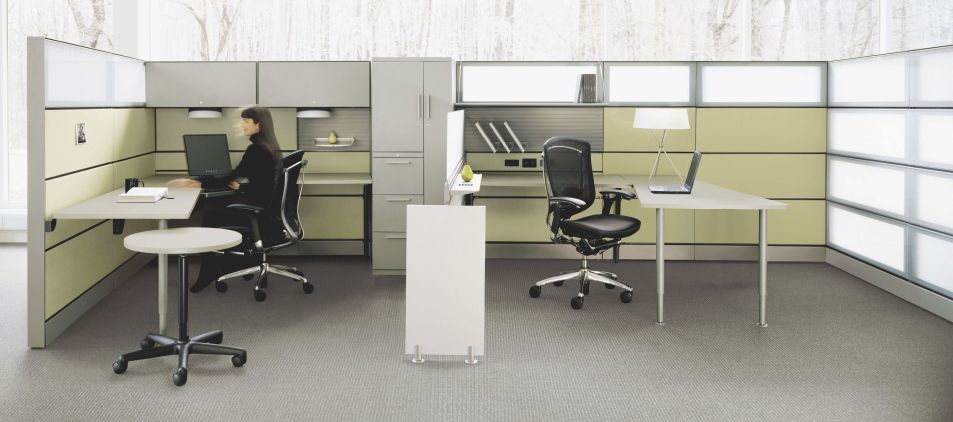Details
Desking Vs. Benching - Know the difference
09 May 2016An increasing number of new offices are starting to embrace and adopt the open-plan trend, all in an effort to promote more minimalist and collaborative environments. The furniture industry - manufacturers and designers alike, have noticed a shift in interest towards ‘Benching’, leaving behind the older desking systems.
As with most trends, facts tend to get misplaced or ignored along the way. One of them being the words ‘Desking’ & ‘Benching’ being used interchangeably. It’s important that key decision makers in the design process are educated in this topic. It avoids revisions and deviations from the approved design concept.
Let’s break it down as simple as possible -
THE BASICS :
Desking and Benching isn’t a simple tomato-tomahto thing. There’s a clear difference which isn’t too hard to spot.

Benching systems are essentially layouts that use long, shared worksurfaces to connect workstations. To the uninformed, it’s simply a metal frame and table based structure- thus giving it a lighter feel.The absence of panels and minimal separation means more open communication between staff and teams. It is the open-plan layout in it’s truest sense. Separating work zones involves the use of screen and simple storage items like pedestals. It’s a great way to ensure larger number of people to work within a smaller space.

Desking systems on the other is more versatile, allowing for a greater degree of creativity when it comes to configurations. These usually go hand-in-hand with panels and allow for creation of ‘Clusters’ of desks, for specific number of people to work together. Desking also comes with a number of casegoods or storage options with it’s familiar combinations, which is not possible in benching. The storage components that act as a divider/power carrier are called ‘storage spines’
PRO’S & CON’S
Benching
Benefits-
- Improved Collaboration & Communication
- Ease of reconfiguration
- Less Expensive when accommodating larger number of staff in one unit.
- Improved use of real-estate and ROI through maximising floor space when compared to conventional desking.
- Flexibility in use - work stations, hot-desking, meeting etc.
Drawbacks -
- Users may experience decline in productivity and focus. This may be due to workers losing their sense of space and focus in the absence of isolated or dedicated working zones.
- Not as effective cost-wise for fewer quantities of users ( 2 or 4 ).
- Lack of Storage options.
- Decreased screen or separator heights means it’s difficult to avoid noise.
Desking
Benefits -
- Increased scope for creativity with different configurations and options, creating a varied landscape feel.
- Easier to create isolated working zones for concentration and productivity.
- Acoustics and noise control are much better with the use of panels.
- Storage options are plenty.
Drawbacks -
- Re-configuration can prove to be difficult in the absence of specific parts.
- Add-on components translates to increased costs.
- Not ideal if you want to maximise on collaborative environments.
The Total Office provides workspace solutions focusing on ergonomic and collaborative products that meet global environmental standards.
-
“Creating your work experience using ours”











